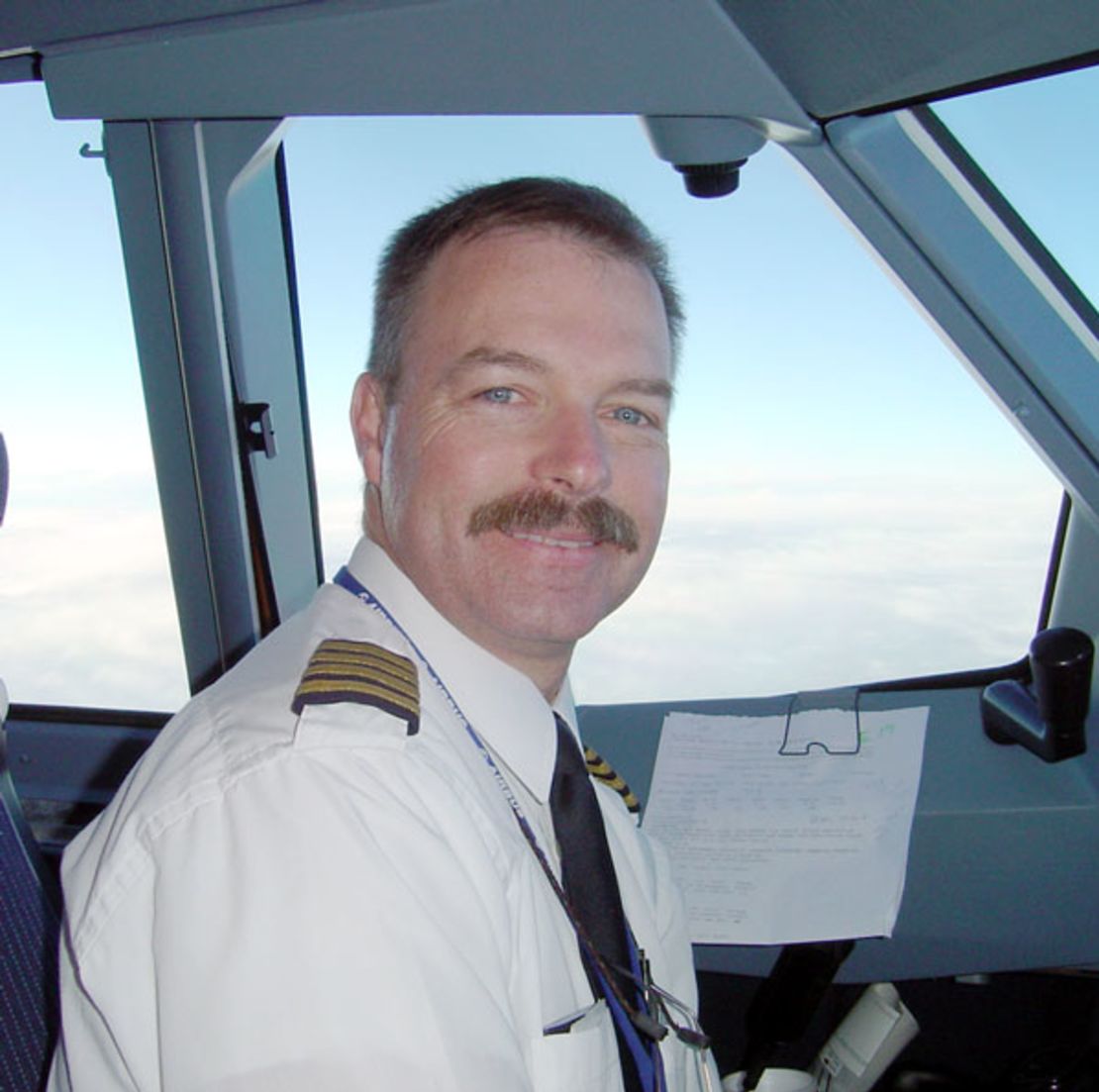Editor’s Note:
Story highlights
Bill Palmer: Pilots' main defense against missiles is to avoid flying over conflict areas
He says Iraq was a no-fly zone during the war, and parts of Ukraine are off-limits
Palmer: Most planes have no defenses against missiles
U.S. officials say they believe that Malaysia Airlines Flight 17 was brought down by a surface-to-air missile, resulting in the death of 298 people over eastern Ukraine.
CNN spoke with pilot Bill Palmer about the considerations of flying in and around areas of upheaval. Palmer, an Airbus A330 captain for a major airline, is the author of “Understanding Air France 447,” an explanation of the details and lessons of the crash of that aircraft in June 2009.

CNN: As a professional pilot, do you think about the possibility of this kind of incident as you do your job?
Bill Palmer: No, not usually, as we don’t normally fly over areas where there is hostility below.
However, for certain types of operations – such as military charters to certain locations – the threat may be significantly higher.
Recall the case of a DHL Airbus A300 cargo jet that was struck by a surface-to-air missile in November 2003 in Baghdad. Despite a steep climb departure procedure due to the threat, a missile made contact with the airplane’s left wing. Miraculously, despite knocking out all of the aircraft’s flight controls and a fuel-fed fire in the left wing, the crew was able to land the airplane successfully.
CNN: Do airlines consider geopolitical battles as they plan their routes?
Palmer: The companies’ dispatchers work closely with security advisers and authorities who produce continuous assessments, air traffic control agencies and meteorologists in planning the route. Dispatchers additionally obtain overflight authorizations where those requirements apply. These type of security issues are indeed taken into consideration. For example, the situation in Israel is under close watch, as it may affect flights.
For those operations, such as military charters in regions where tensions are higher, certainly the risk is considered.
Past shoot-down incidents, such as Korean 007 by Russian fighters in 1983 and the Iran Air 655 shoot-down by the USS Vincennes in 1988, occurred when tensions were high, if not in the public eye, at least among military commanders under pressure in the area. It is likely that this will be an element in this latest tragedy.
CNN: How have airlines and pilots altered routes in recent years due to events such as the Iraq War?
Palmer: In the case of Iraq, the entire country was a no-fly zone when there were hostilities taking place on the ground. Operations to areas such as Afghanistan carry warnings about using Afghanistan, even for emergency diversions. But commercial airliners routinely transit countries such as Iran, Iraq and Afghanistan. Specific routes and minimum altitudes can apply in those areas, and the threat to commercial aviation is continually evaluated.
CNN: Are parts of the Ukraine off-limits due to the civil strife in that nation?
Palmer: Yes, since April there has been a special U.S. aviation regulation that applies to all U.S. air carriers and U.S. commercial operators prohibiting (PDF) operation over parts of Ukraine, with few exceptions.
However, the prohibited area is over the Crimea region in southeast Ukraine, south of the area MH17 is reported to have been lost in. (After Thursday’s disaster, the FAA said that it had issued a notice prohibiting U.S. airline flight operations in the airspace over eastern Ukraine until further notice.)
CNN: Can commercial jets spot and evade missiles in any way?
Palmer: No, with the possible exception of some El Al aircraft, commercial aircraft do not have the capability to detect missile threats. It would be extremely difficult to see a missile coming at the aircraft visually, and there are no detection systems in place. Additionally, while in cruise, even if a missile threat was known (which is very unlikely), the maneuver capabilities of the aircraft are quite limited. Airliners routinely operate close to their performance limiting altitude; with very little additional engine power available, their operating speed is also limited to a narrow range between the minimum and maximum speeds.
CNN: Is there more that should be done to protect commercial aviation?
Palmer: The major threat to commercial aircraft, especially from shoulder-launched missiles, does stretch back some years. TSA statistics indicate that 36 confirmed attacks on airliners have occurred since 1978, most of which were smaller aircraft. Those weapons are very portable, relatively inexpensive and easy to hide, with terrorist elements in mind as the antagonists, not established military units equipped with more sophisticated, longer-range and powerful missile systems, as may be the case with MH17.
As early as 2004, the Air Line Pilots Association has been intensely studying the subject of the small missile threat. But even for that, the solutions are very expensive and not without serious issues. Existing military systems cannot simply be installed in commercial aircraft for a number of technical, practical and economic reasons.
Can or should more be done to protect commercial aviation? Sure, but it’s not clear what the best solution is. Would there be any defense against the type of missile likely used against MH17? Probably not, as those same missiles are used to take down military aircraft as well.
Read CNNOpinion’s new Flipboard magazine






























































